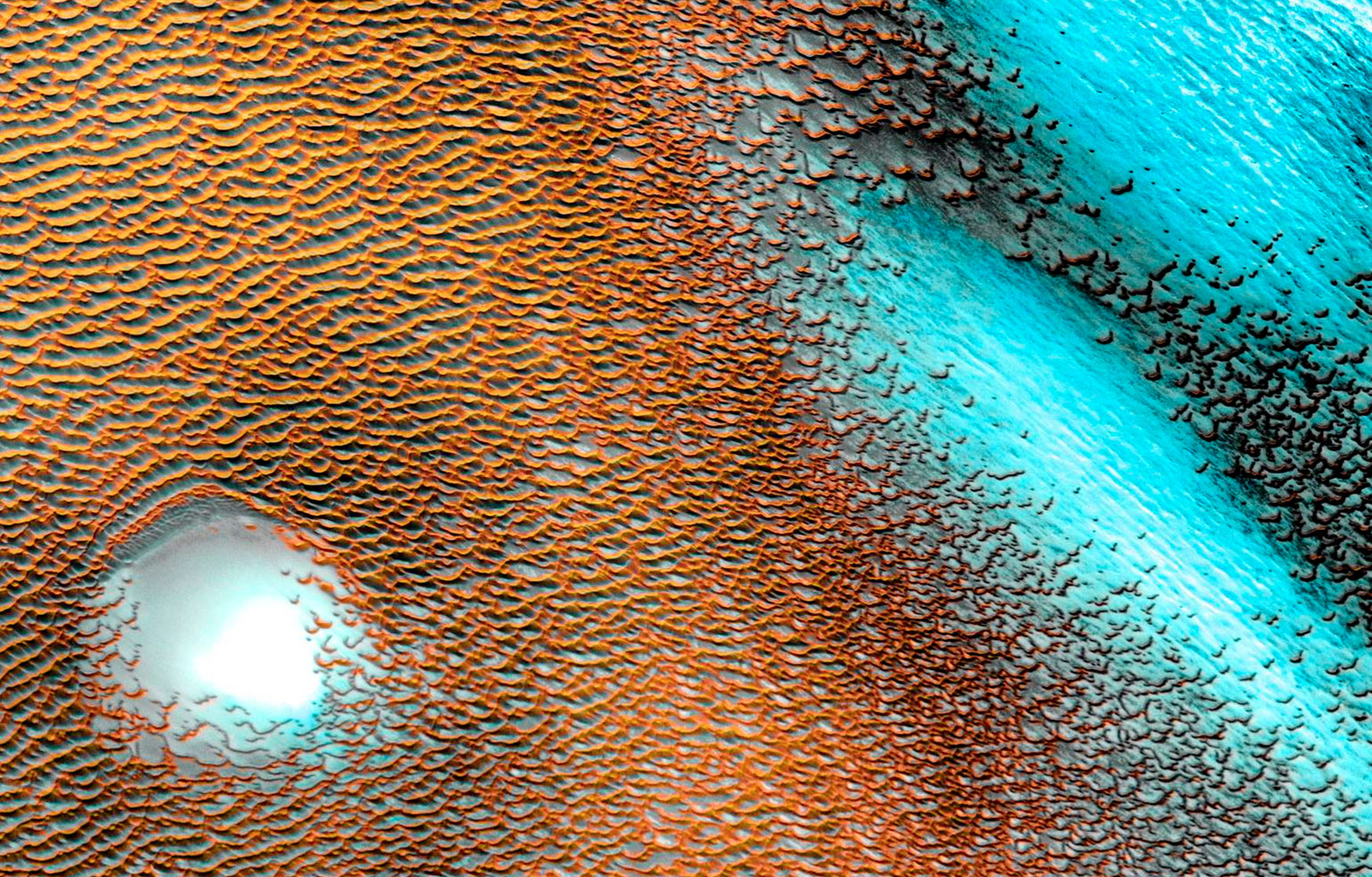Star dune origins finally understood thanks to new study
For the first time ever, scientists have figured out the age of one of Earth’s oldest star dunes. These peculiar sand dunes get their name from the designs of rocks and sand that seem to spread down from their central peak, making them appear like stars when viewed from above. These interesting dunes form on Earth and even on other planets like Mars. We’ve even spotted dunes that look like popular logos on Mars.
For years, scientists have been baffled by the fact that evidence of more ancient dunes like this hasn’t been found. To try to get a better idea of how these massive and peculiar dunes formed, scientists studied the Lala Lallia star dune in southeastern Morocco more in-depth.
Lala Lallia is estimated to have first formed over 13,000 years ago, a new study published in Scientific Reports says. Star dunes like Lala Lallia are actually very common nowadays, but scientists have almost never found evidence of them in Earth’s geological record.
As one of the oldest star dunes we’ve discovered so far, Lala Lallia became a testing bed for scientists trying to learn more about how these peculiar sand dunes form. Using ground penetrating radar, they found that the internal structure of the dune likely formed at the same time as the Younger Dryas event.
The Younger Dryas event was a very abrupt period of global cooling that began around 12,900 years ago. It returned some portions of our planet to Ice Age conditions but then was followed by a very rapid period of global warming. The researchers estimate it took roughly 900 years for Lala Lallia to form.
Scientists also say the dune stopped growing for a period of 8,000 years, and some pottery around the site even suggests humans might have once called the region surrounding it home at one point. This suggests that the Erg Chebbi region of the Sahara Desert, where the star dune resides, may not have been as day at one point.
Additionally, the researchers say that Lala Lallia appears to be moving slowly westward, driven by eastern-originating winds. Now that we have a better idea of how these star dunes form, scientists can use that information to look for other evidence of ancient star dunes in Earth’s geological record.
For the first time ever, scientists have figured out the age of one of Earth’s oldest star dunes. These peculiar sand dunes get their name from the designs of rocks and sand that seem to spread down from their central peak, making them appear like stars when viewed from above. These interesting dunes form on Earth and even on other planets like Mars. We’ve even spotted dunes that look like popular logos on Mars.
For years, scientists have been baffled by the fact that evidence of more ancient dunes like this hasn’t been found. To try to get a better idea of how these massive and peculiar dunes formed, scientists studied the Lala Lallia star dune in southeastern Morocco more in-depth.
Lala Lallia is estimated to have first formed over 13,000 years ago, a new study published in Scientific Reports says. Star dunes like Lala Lallia are actually very common nowadays, but scientists have almost never found evidence of them in Earth’s geological record.

As one of the oldest star dunes we’ve discovered so far, Lala Lallia became a testing bed for scientists trying to learn more about how these peculiar sand dunes form. Using ground penetrating radar, they found that the internal structure of the dune likely formed at the same time as the Younger Dryas event.
The Younger Dryas event was a very abrupt period of global cooling that began around 12,900 years ago. It returned some portions of our planet to Ice Age conditions but then was followed by a very rapid period of global warming. The researchers estimate it took roughly 900 years for Lala Lallia to form.
Scientists also say the dune stopped growing for a period of 8,000 years, and some pottery around the site even suggests humans might have once called the region surrounding it home at one point. This suggests that the Erg Chebbi region of the Sahara Desert, where the star dune resides, may not have been as day at one point.
Additionally, the researchers say that Lala Lallia appears to be moving slowly westward, driven by eastern-originating winds. Now that we have a better idea of how these star dunes form, scientists can use that information to look for other evidence of ancient star dunes in Earth’s geological record.
